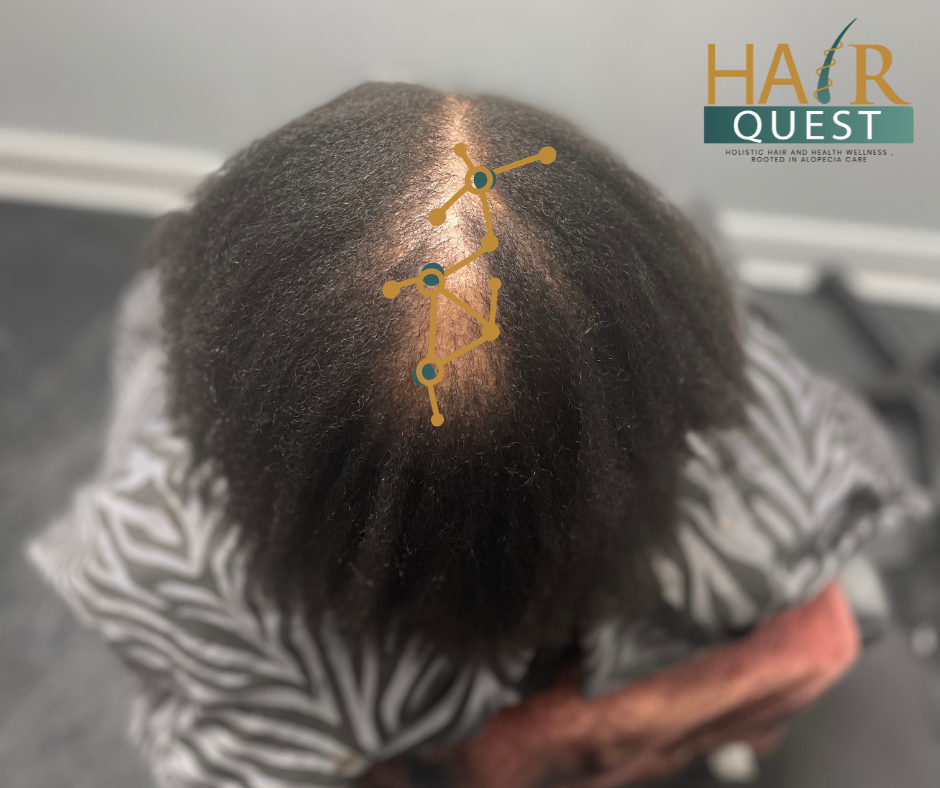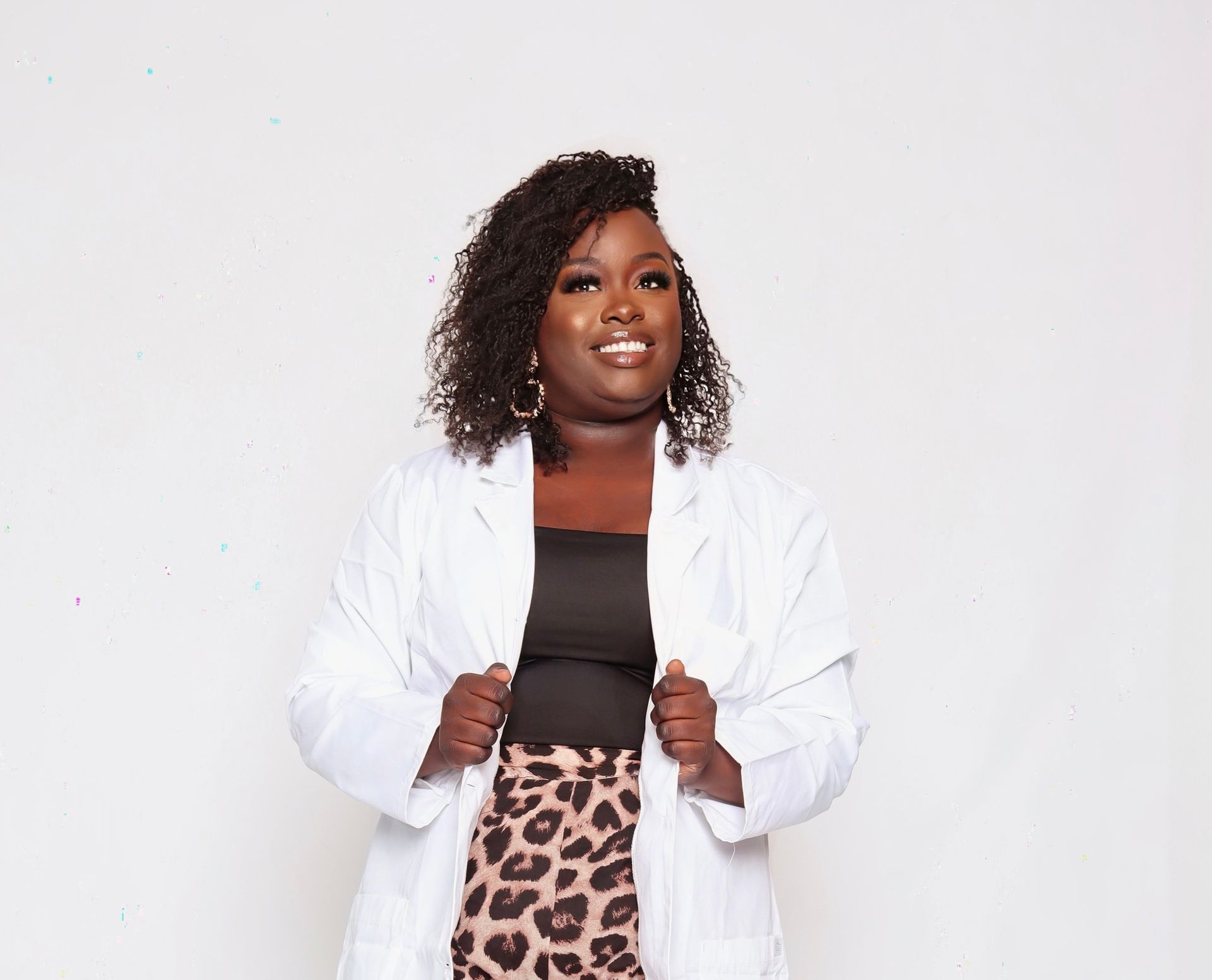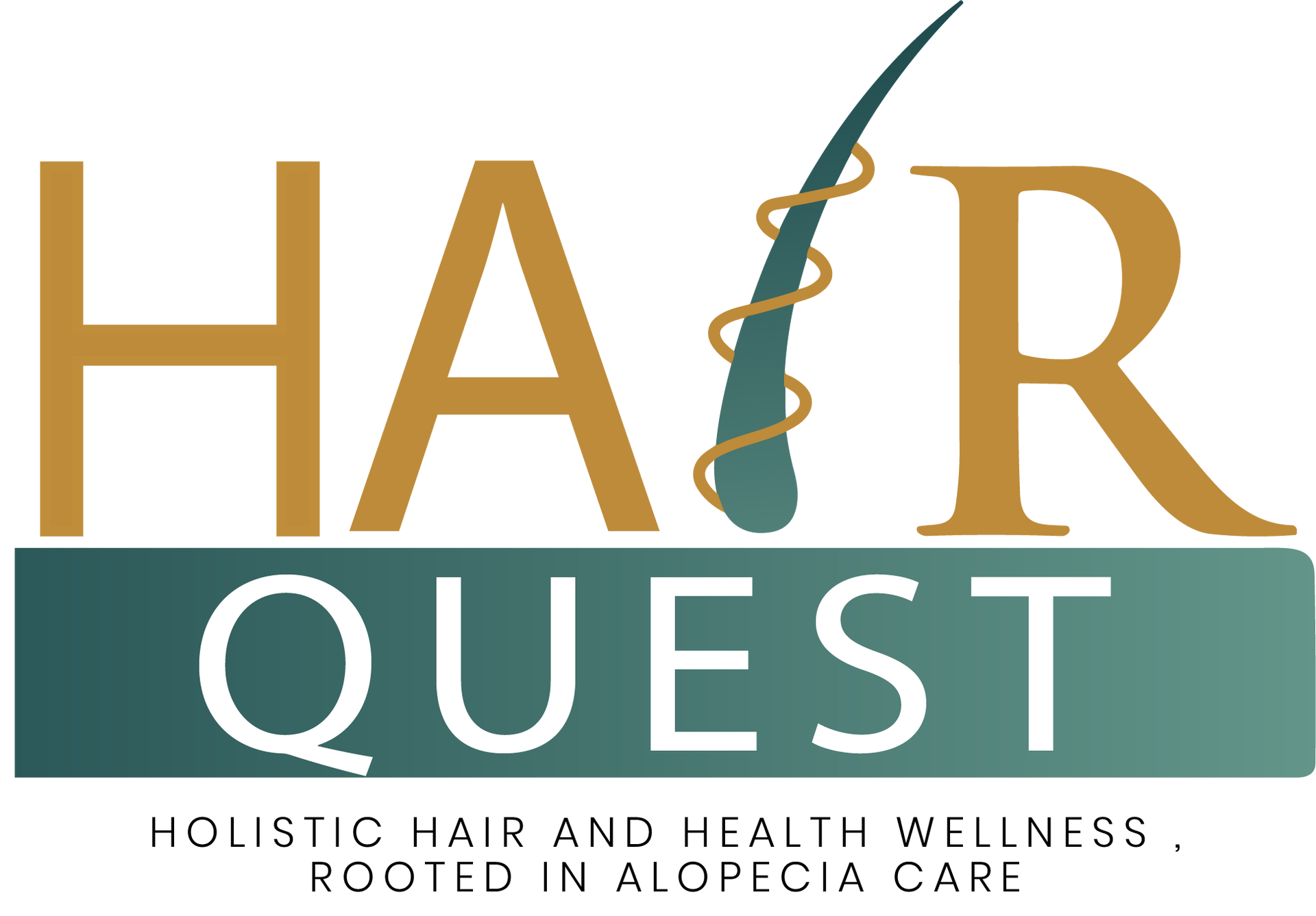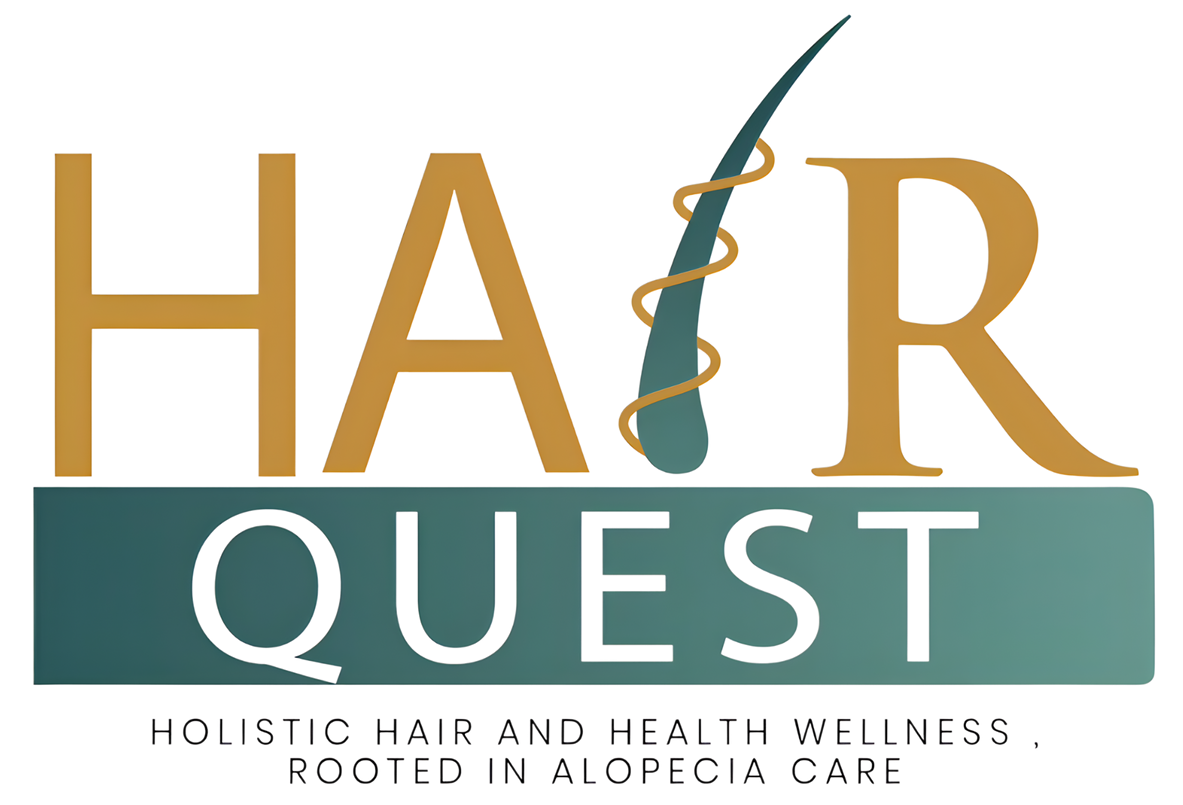Hormonal Hair Loss in Women: How Puberty, Pregnancy & Menopause Impact Your Hair Health

Puberty: When Everything Wakes Up
Puberty is the first wave of hormonal activity. Estrogen, progesterone, and androgens are learning how to work together — and sometimes they clash.
That’s why your teenage years might’ve brought oily hair, texture changes, or more breakage. And for your daughter, you might be seeing the same thing right now.
It’s not “bad hair.” It’s communication. Her body is adjusting to new hormonal rhythms, and how well it balances now can shape how she experiences womanhood later — from her cycles to her scalp.
The key is not to ignore it or overreact — just to understand it.
Pregnancy: The Glow-Up… and the Come-Down
Pregnancy can feel like the best your hair has ever been — full, thick, strong.
That’s estrogen keeping your follicles in a longer growth phase, But after giving birth, those hormones drop fast, and all the hair that was supposed to shed months ago finally does.That’s postpartum shedding, and it’s normal for a few months.
Here’s the line in the sand:
If shedding lasts longer than 3–6 months, that’s not postpartum anymore — that’s a deeper imbalance.
When your body stays depleted — from minerals, nutrients, or thyroid changes — it doesn’t have enough to feed your follicles, and your hair tells the truth before your labs do.
This isn’t about panic. It’s about paying attention.

Why Birth Control and HRT Aren’t the Fix
When women share symptoms — missed cycles, mood swings, hot flashes, or hair loss — the first response they usually get is: “Let’s put you on birth control.” Or later, “Let’s start hormone replacement therapy.”
But here’s the truth: those don’t solve the imbalance — they silence it.
Birth control overrides your body’s rhythm. HRT adds hormones into a system that might not know how to use them yet.
If your liver, gut, or adrenals aren’t functioning well, adding synthetic or bioidentical hormones can cause even more confusion.
So when your cycles become irregular, your energy dips, or your hair starts thinning — that’s not just “woman stuff.”
That’s your body saying: “I need support, not suppression.”
Menopause: The Reset
Menopause isn’t the end — it’s a reset.
Your hormones aren’t gone; they’re just finding a new pace.
Estrogen and progesterone drop, testosterone takes the lead, and your follicles can feel the difference.
You may notice thinning at the crown, dryness, or slower growth — but it’s not hopeless.
With the right support for circulation, oxygen flow, and nutrient balance, your scalp can
absolutely recover its vitality, I see it every day in my work.
How I Help Women Understand What’s Really Happening
Here’s the thing — I don’t hand out cookie-cutter plans or overwhelm you with supplements. That’s not real help.
What I do is help you understand the what and the why:
- What your body is showing.
- Why it’s happening.
- And where your system might need support.
Because once you understand your body, recovery stops feeling like a mystery — and starts feeling like a plan.
You don’t have to guess. You don’t have to feel crazy. You just need someone who knows how to read what your body’s been saying all along.
Here’s What I Want You to Remember
- Hormonal changes are part of life — but imbalance is not your new normal.
- Birth control and HRT can pause symptoms, but they can’t create balance.
- If shedding lasts longer than 3–6 months after birth, it’s a deeper issue.
- And your hair? It’s never the enemy — it’s the messenger.
Book your Hair Recovery session today
Let's uncover what phase you’re in
If this sounds like you, your daughter, sister, or friend.
It’s time to stop guessing and start understanding.
I work with women across Moncks Corner and Berkeley County who are ready to decode their hormones, understand their hair, and create a strategy that fits them.
Your hair isn’t falling out for no reason. It’s trying to get your attention.
Let’s listen — together sister!




